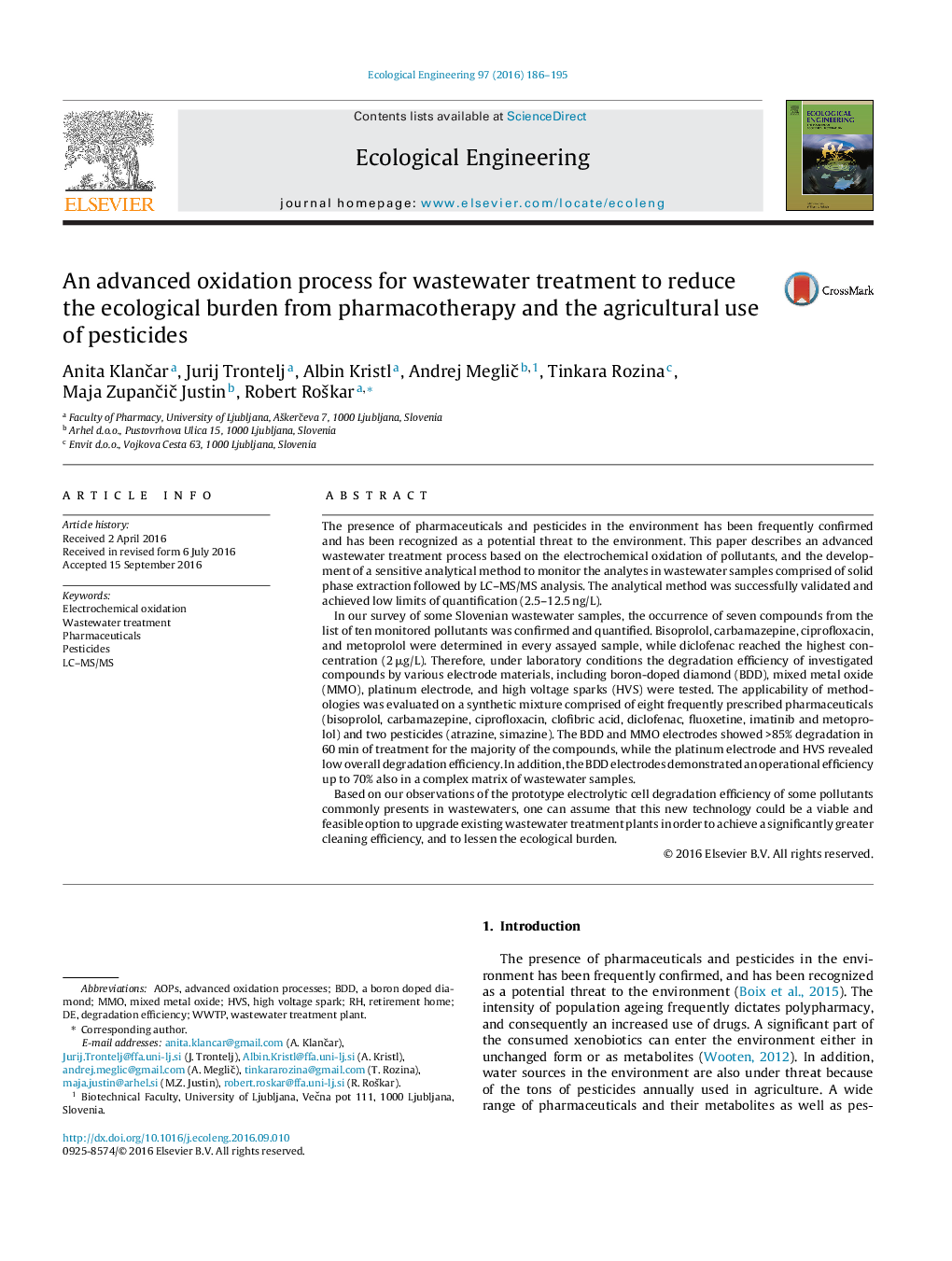| کد مقاله | کد نشریه | سال انتشار | مقاله انگلیسی | نسخه تمام متن |
|---|---|---|---|---|
| 4388379 | 1618002 | 2016 | 10 صفحه PDF | دانلود رایگان |
• An analytical method for 8 pharmaceuticals and 2 pesticides was successfully validated.
• Most of the selected compounds were detected in wastewater samples.
• The advanced oxidation treatments of compounds were tested under laboratory conditions.
• Boron-doped diamond and mixed metal oxide electrodes revealed high degradation efficiency.
• The prototype cell could be a feasible option to upgrade wastewater treatment plants.
The presence of pharmaceuticals and pesticides in the environment has been frequently confirmed and has been recognized as a potential threat to the environment. This paper describes an advanced wastewater treatment process based on the electrochemical oxidation of pollutants, and the development of a sensitive analytical method to monitor the analytes in wastewater samples comprised of solid phase extraction followed by LC–MS/MS analysis. The analytical method was successfully validated and achieved low limits of quantification (2.5–12.5 ng/L).In our survey of some Slovenian wastewater samples, the occurrence of seven compounds from the list of ten monitored pollutants was confirmed and quantified. Bisoprolol, carbamazepine, ciprofloxacin, and metoprolol were determined in every assayed sample, while diclofenac reached the highest concentration (2 μg/L). Therefore, under laboratory conditions the degradation efficiency of investigated compounds by various electrode materials, including boron-doped diamond (BDD), mixed metal oxide (MMO), platinum electrode, and high voltage sparks (HVS) were tested. The applicability of methodologies was evaluated on a synthetic mixture comprised of eight frequently prescribed pharmaceuticals (bisoprolol, carbamazepine, ciprofloxacin, clofibric acid, diclofenac, fluoxetine, imatinib and metoprolol) and two pesticides (atrazine, simazine). The BDD and MMO electrodes showed >85% degradation in 60 min of treatment for the majority of the compounds, while the platinum electrode and HVS revealed low overall degradation efficiency. In addition, the BDD electrodes demonstrated an operational efficiency up to 70% also in a complex matrix of wastewater samples.Based on our observations of the prototype electrolytic cell degradation efficiency of some pollutants commonly presents in wastewaters, one can assume that this new technology could be a viable and feasible option to upgrade existing wastewater treatment plants in order to achieve a significantly greater cleaning efficiency, and to lessen the ecological burden.
Figure optionsDownload as PowerPoint slide
Journal: Ecological Engineering - Volume 97, December 2016, Pages 186–195
